BLOG
The Complete Guide to STP Marketing: Segmentation, Targeting & Positioning
Published: Sep 30, 2020
What is STP marketing and what role does it play in boosting conversions and revenue? We look at the Segmentation, Targeting, Positioning framework illustrated by real-life examples.
Segmentation targeting positioning marketing is a core concept in modern-day marketing. Without it, marketing campaigns would be generic, have little to no personalization, and overall would not be able to convert at a level most businesses would deem effective.
Let’s delve into the intricacies of the STP Model and see how implementing this framework into your eCommerce business can yield amazing results.
Table of Contents:
1. What is STP marketing
2. The STEP formula
3. Benefits of STP marketing
4. STP marketing example: The Cola Wars
5. How to build an STP marketing strategy
What is STP marketing?
STP marketing is an acronym for Segmentation, Targeting, and Positioning – a three-step model that examines your products or services as well as the way you communicate their benefits to specific customer segments.
In a nutshell, the STP marketing model means you segment your market, target select customer segments with marketing campaigns tailored to their preferences, and adjust your positioning according to their desires and expectations.
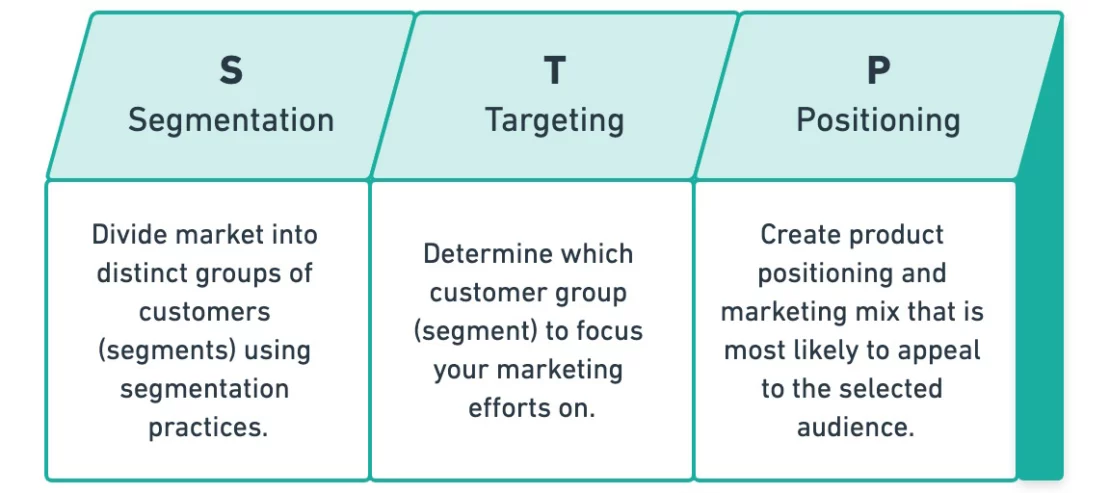
STP marketing is effective because it focuses on breaking your customer base into smaller groups, allowing you to develop very specific marketing strategies to reach and engage each target audience.
In fact, 59% of customers say that personalization influences their shopping decision and another 44% said that a personalized shopping experience would influence them to become repeat customers of a brand.
STP marketing represents a shift from product-focused marketing to customer-focused marketing. This shift gives businesses a chance to gain a better understanding of who their ideal customers are and how to reach them. In short, the more personalized and targeted your marketing efforts, the more successful you will be.
The STEP Formula
If you are looking for a simple way to remember and summarize the STP marketing concept, the acronym STEP is extremely useful:
Segmentation + Targeting Equals Positioning
This formula clearly illustrates that each segment requires tailored positioning and marketing mix to ensure its success. Let’s take a closer look at each of the three steps in the STP marketing model.
Segmentation
The first step of the STP marketing model is the segmentation stage. The main goal here is to create various customer segments based on specific criteria and traits that you choose. The four main types of audience segmentation include:
- Geographic segmentation: Diving your audience based on country, region, state, province, etc.
- Demographic segmentation: Dividing your audience based on age, gender, education level, occupation, gender, etc.
- Behavioral segmentation: Dividing your audience based on how they interact with your business: What they buy, how often they buy, what they browse, etc.
- Psychographic segmentation: Dividing your audience based on “who” your potential customer is: Lifestyle, hobbies, activities, opinions, etc.

Targeting
Step two of the STP marketing model is targeting. Your main goal here is to look at the segments you have created before and determine which of those segments are most likely to generate desired conversions (depending on your marketing campaign, those can range from product sales to micro conversions like email signups).
Your ideal segment is one that is actively growing, has high profitability, and has a low cost of acquisition:
- Size: Consider how large your segment is as well as its future growth potential.
- Profitability: Consider which of your segments are willing to spend the most money on your product or service. Determine the lifetime value of customers in each segment and compare.
- Reachability: Consider how easy or difficult it will be for you to reach each segment with your marketing efforts. Consider customer acquisition costs (CACs) for each segment. Higher CAC means lower profitability.
There are limitless factors to consider when selecting an audience to target – we’ll get into a few more later on – so be sure that everything you consider fits with your target customer and their needs.
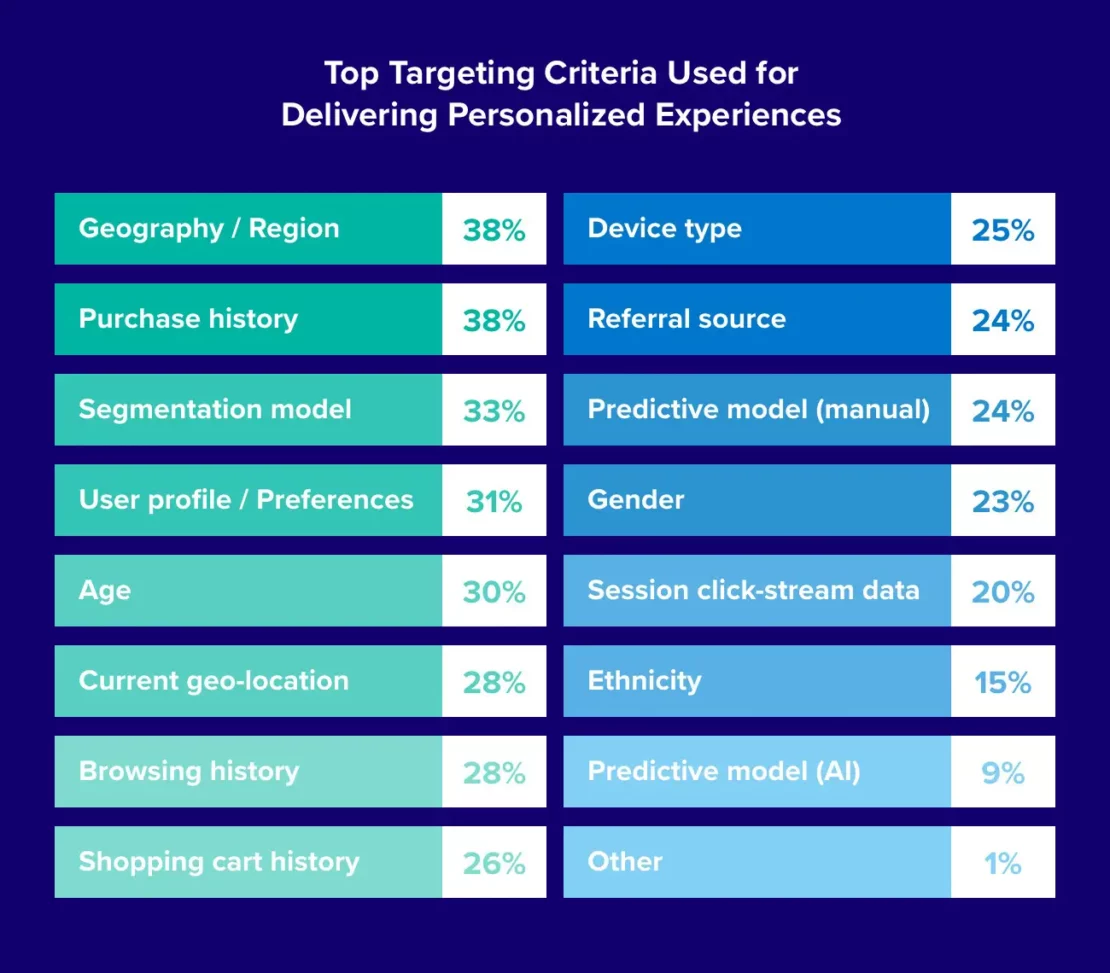
Positioning
The final step in this framework is positioning, which allows you to set your product or services apart from the competition in the minds of your target audience. There are a lot of businesses that do something similar to you, so you need to find what it is that makes you stand out.
All the different factors that you considered in the first two steps should have made it easy for you to identify your niche. There are three positioning factors that can help you gain a competitive edge:
- Symbolic positioning: Enhance the self-image, belongingness, or even ego of your customers. The luxury car industry is a great example of this – they serve the same purpose as any other car but they also boost their customer’s self-esteem and image.
- Functional positioning: Solve your customer’s problem and provide them with genuine benefits.
- Experiential positioning: Focus on the emotional connection that your customers have with your product, service, or brand.
The most successful product positioning is a combination of all three factors. One way to visualize this is by creating a perceptual map for your industry. Focus on what is important for your customers and see where you and your competitors land on the map.
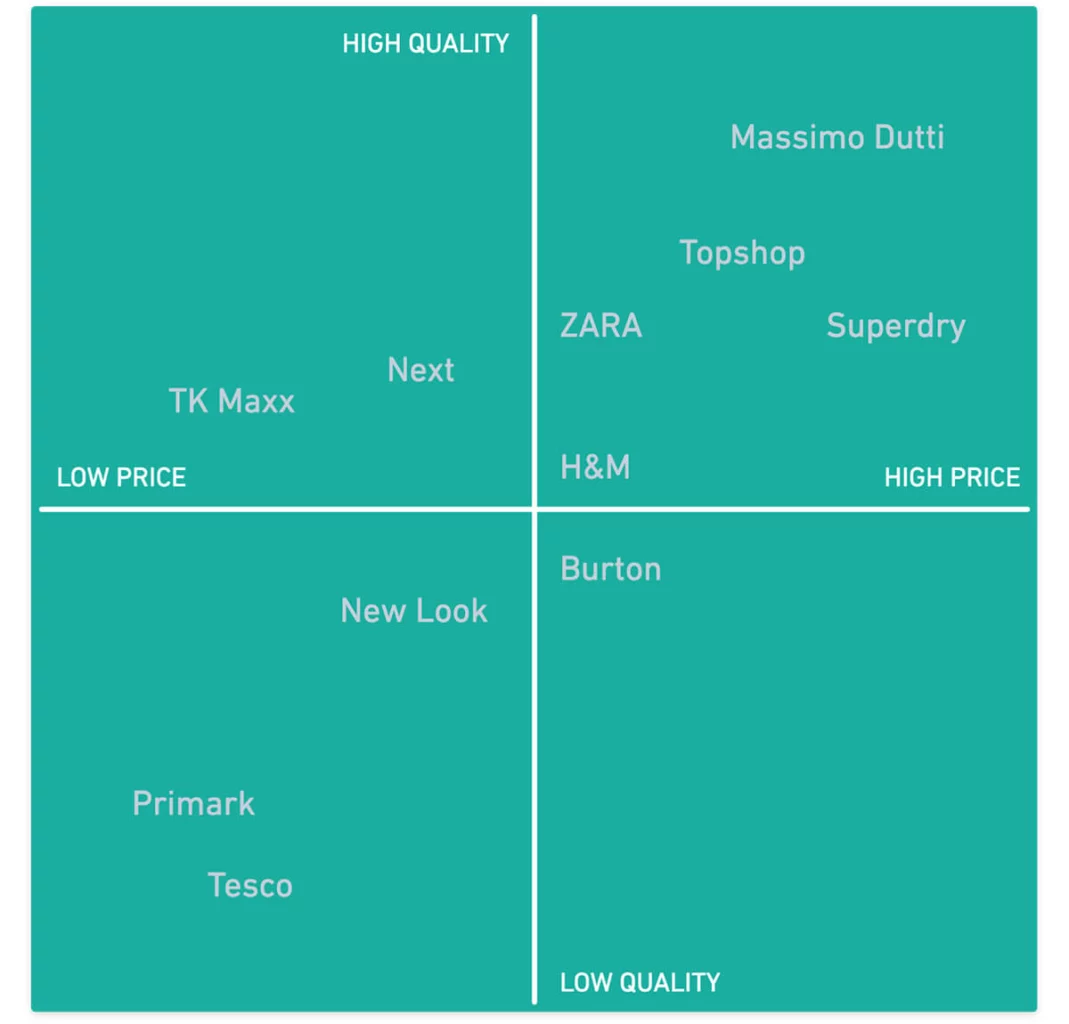
Benefits of STP marketing
If you aren’t already convinced that STP marketing is going to revolutionize your business, we’re breaking down the key benefits that STP marketing has over a traditional marketing approach.
Because STP focuses on creating a precise target audience and positioning your products/services in a way that is most likely to appeal to that audience, your marketing becomes hyper-personalized. With personalization:
- Your brand messaging becomes more personal and empathetic because you have your customer personas and know exactly whom you’re talking to;
- Your marketing mix becomes more crystalized and yields higher return on investment because you’re no longer wasting budget on channels that your audience simply ignores;
- Your market research and product innovation become more effective because you know exactly whom to ask for advice and feedback in the development phase.
Yieldify’s recent research shows that eCommerce leaders are adopting personalization at an unprecedented rate – 74% of eCommerce sites now claim to have now adopted some level of personalization strategy. Their reasons?
Fifty-eight percent found that personalization helps increase customer retention, 55% cited conversion and 45% found that personalization actually helped minimize the cost of new customer acquisition.
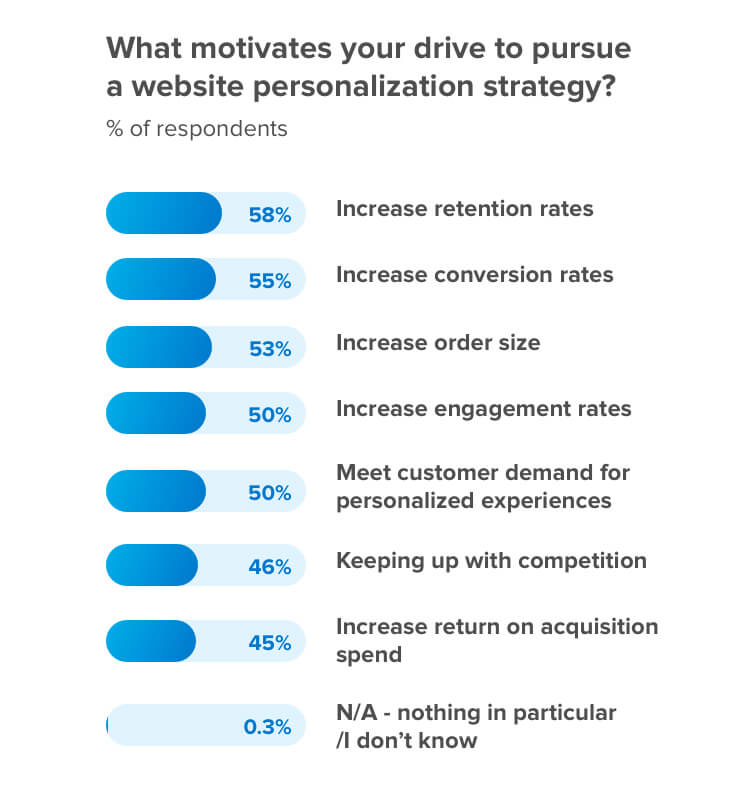
Finally, STP marketing levels the playing field. The framework allows small businesses and startups to find success in their niche markets when they normally wouldn’t have the reach to compete with the larger whole-market businesses in their industry.
STP marketing examples: The Cola Wars
STP marketing has been around for a long time – and it has been effective for just as long. We’re going to take a look at a real-world example of STP marketing so you can see how it has worked historically in increasing conversions and revenue.
Back in the 1980s, when Pepsi-Cola was trying to claim some of the market share from Coca-Cola, Pepsi used segmentation to target certain key audiences. They focused on an attitude and loyalty segmentation approach and divided the market into three consumer segments:
- Consumers with a positive attitude to the Coke brand who were 100% loyal to Coke.
- Consumers with a positive attitude to the Pepsi brand who were 100% loyal to Coke.
- Consumers with a positive attitude to both brands, with loyalty to both, who switched their purchases between both brands.
Pepsi had always focused their marketing efforts on the third segment, as it was the most attractive and had the highest return on investment. Focusing on customers loyal to Coke was considered a waste of time and money, as they were unlikely to change their purchasing habits.
However, that all changed with the launch of New Coke in 1985…
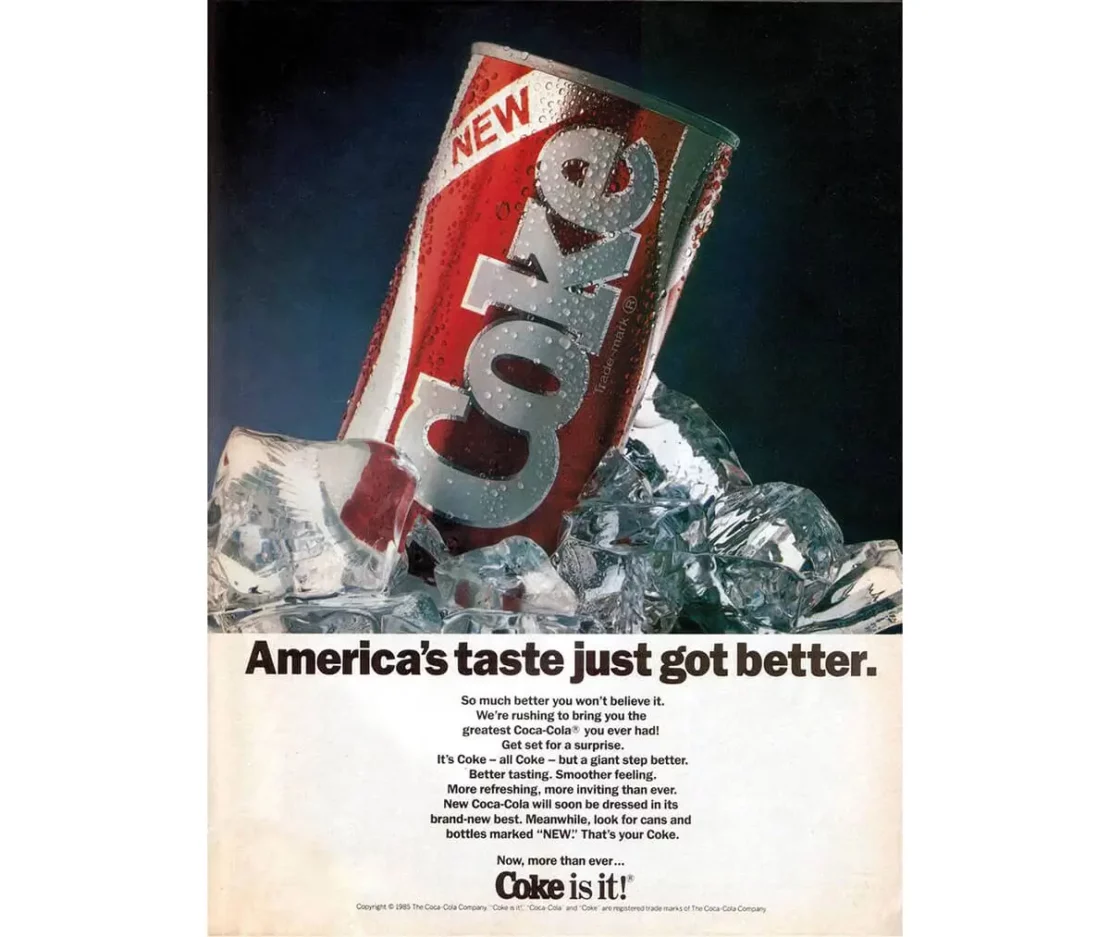
The new iteration of Americas’ favorite beverage missed the spot with a lot of loyal consumers, so Pepsi swopped in. In fact, as Mental Floss points out, “Coke’s headquarters received upwards of 1,500 calls a day, up from the usual 400, with virtually all of them complaining about the change.”
Sensing the change in consumer sentiment, Pepsi began targeting loyal Coke drinkers. The rival brand also refocused its positioning – Pepsi started drumming up the fact that Coca-Cola, supposedly, changed its classic Coke with New Coke to resemble more the taste of Pepsi. Their marketing campaigns were brutal (well, in today’s terms at least):
That same year, Pepsi announced a 14% spike in overall product sales. Pepsi was able to use STP marketing strategies to increase their market share and convert Cola-loyal customers to Pepsi-lovers.
How to create an STP marketing strategy: The full STP model
We covered the three stages of the STP marketing model, looked at the benefits and examples of this approach. While this provides you with an excellent overview of the concept, we want to get into the detail of creating an STP marketing strategy that serves your business.
Below you will find 7 steps to creating a solid marketing strategy using the full STP model.
1. Define the market
The global market is far too big and far too vast for anyone – even the biggest corporation with the most resources – to address. That’s why it’s important to break it down into smaller chunks and clearly define the part you are going after.
Typically, to evaluate your business opportunity, you will need to define your TAM, SAM, and SOM: Total Available Market, Serviceable Available Market, and Serviceable Obtainable Market.
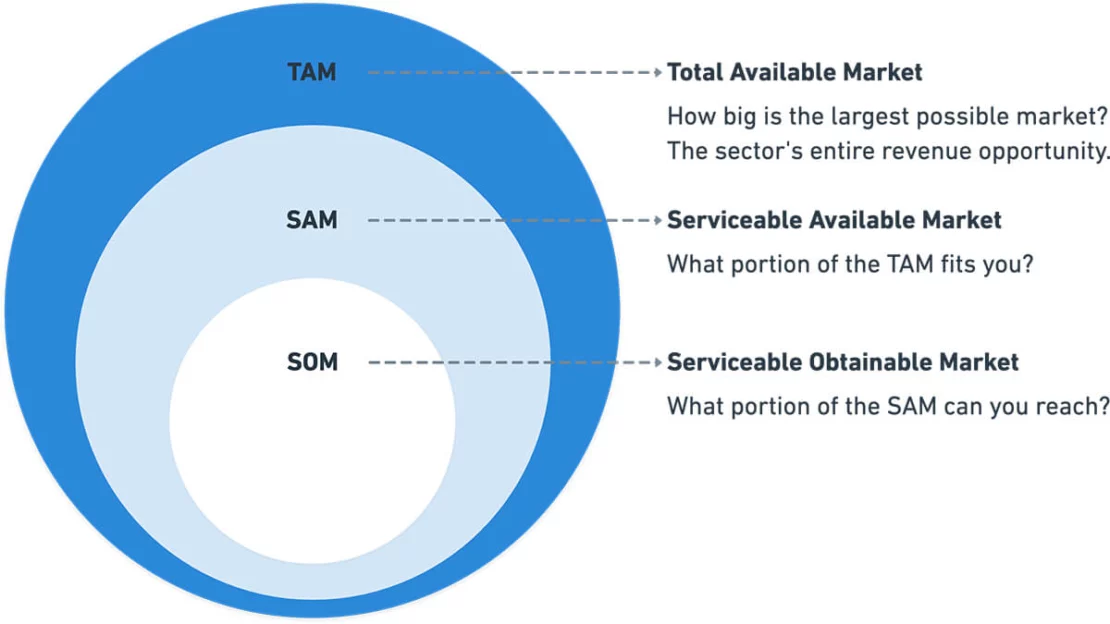
Think of it as an iceberg. The very top peeking from under the water is your SOM – that’s the portion of the market that you can effectively reach.
SAM is is the portion of the total available market that fits your product or service offering. Whereas TAM is the total available market, in other words, “the overall revenue opportunity that is available to a product or service if 100% market share was achieved.”
For example, back when Airbnb was starting to pitch investors, they used the TAM, SAM, SOM model to explain their business potential. Their total available market (TAM) then was valued at $1.9 billion dollars and included any type of accommodation that travelers were booking worldwide.
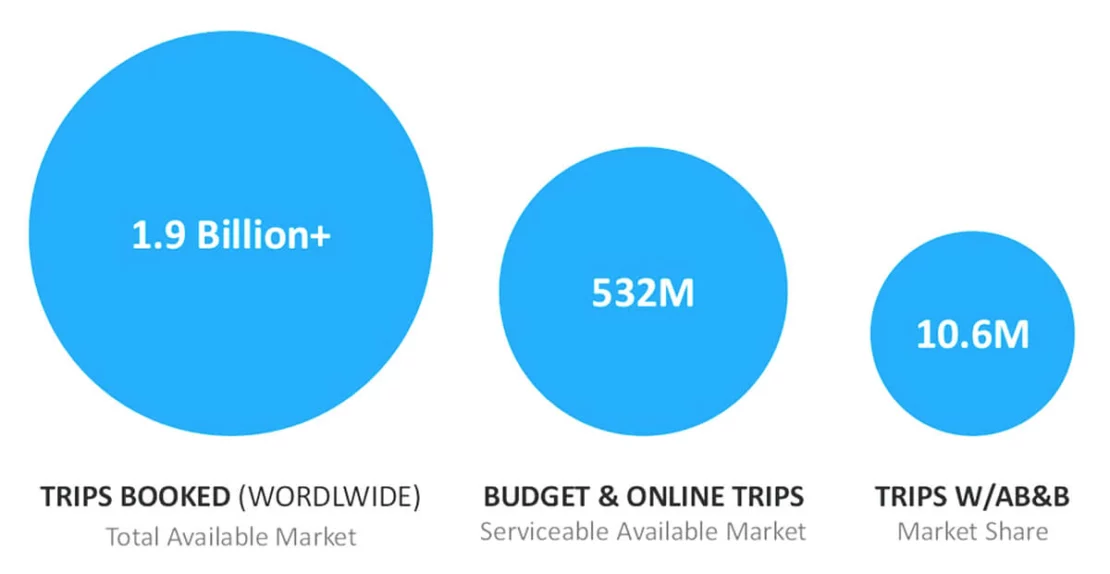
Because their service offering was targeted more at the budget travelers who were using online booking engines to find their stay. In this case, the SAM was valued at $532 million dollars. Lastly, their SOM came in at $10.6 million dollars and signified the revenue obtainable for Airbnb.
Similarly with a consumer product, we can look at Diet Coke and say that its TAM would include the total beverage market. Its SAM would narrow it down to soft drinks, and SOM would zero in on the carbonated sugar-free drinkers out there.
There are several routes you can choose when defining a market. You can do so by:
- Industry classification (agriculture, retail, transportation, etc.
- Product category (apparel, health and beauty, food and beverage, etc.)
- Country (United States, United Kingdom, etc.)
2. Create audience segments
Now that you’ve adequately defined your target market, it’s time to segment it using geographical, demographic, behavioral, and psychographic variables.
Each segmentation variable helps you tap into a different aspect of your audience and when you use them in unison you can create niche segments that really make an impact on your overall marketing effort.
For example, if you split your serviceable obtainable market into men vs women (demographic variables) you are still left with a pretty broad audience segment. However, if you start layering other segmentation variables on top, you can create a precise audience that you can make the biggest impact on.
Perhaps you go after women (demographics) in the United States (geographics) who prefer to spend money on luxury products (psychographics) who follow you on social media or have visited your website in the past (behavior).
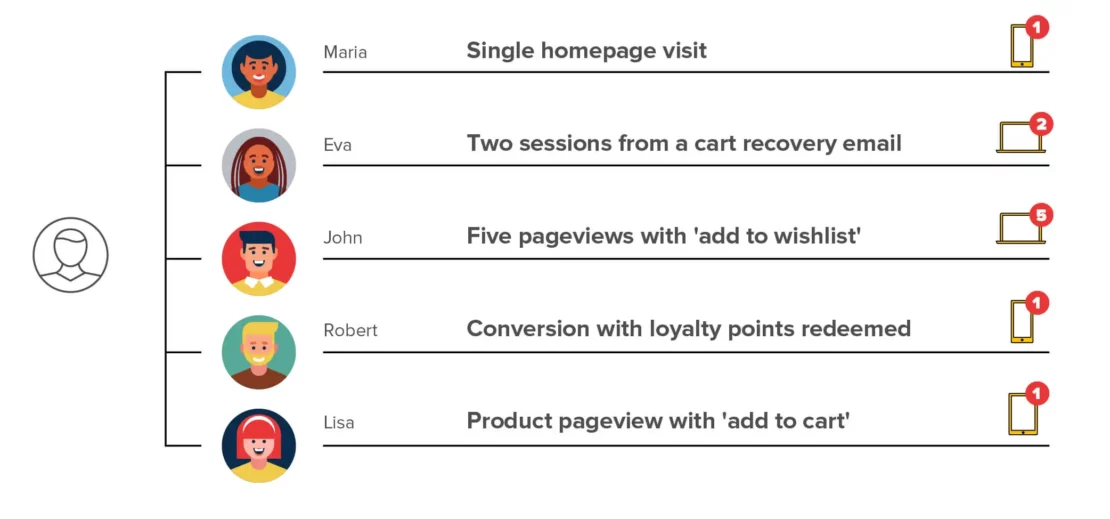
As you can see, this layering method creates a hyper-focused audience segment that allows you to create an extremely personalized experience. And as we mentioned before, personalization has a huge impact on the success of your marketing efforts.
3. Construct segment profiles
When you’ve landed on your viable market segments, it’s time to develop segment profiles. Segment profiles are very similar to your ideal customer personas but they act as subsets of your main persona – they are detailed descriptions of the people in each segment.
Describe their needs, behaviors, demographics, brand preferences, shopping traits, marital status, and any other characteristics. Each profile should be as detailed as possible to give you and your business a good understanding of the potential customers within each segment. This will allow you to compare segments for strategy purposes.
4. Evaluate the commercial attractiveness of each segment
Cross-referencing your findings with available market data and consumer research will help you assess which of your constructed segments can bring in the biggest return on your investment. Consider factors like segment size, growth rates, price sensitivity, and brand loyalty.
With this information, you will be able to evaluate the overall attractiveness of each segment in terms of dollar value.
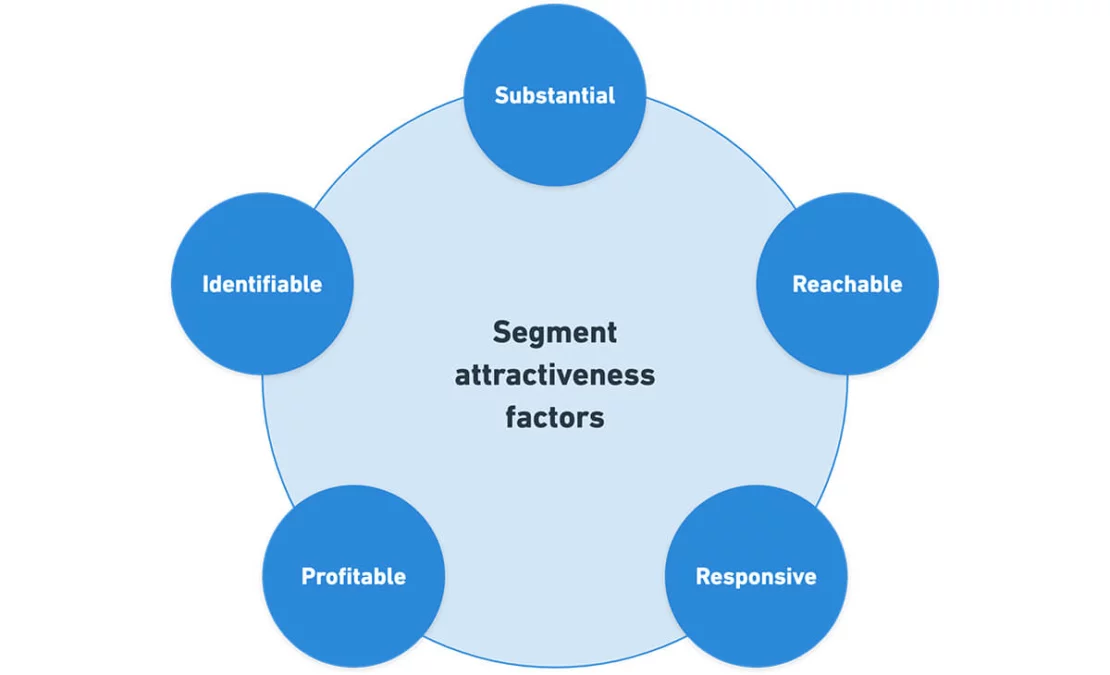
5. Select target audience/s
Now that you have detailed information on all of your segments, you need to spend some time deciding which ones are the most viable to use as your target audiences. You’ll need to take into account your overall business strategy, the attractiveness of the segment, and the competition that exists in that segment.
The best way to determine the most viable segment is by performing cluster analysis. Quite a complex and technical topic on its own (check out this guide to get more insights), clustering in the context of eCommerce segmentation means using mathematical models to identify groups of customers that are more similar to one another than those in other groups.
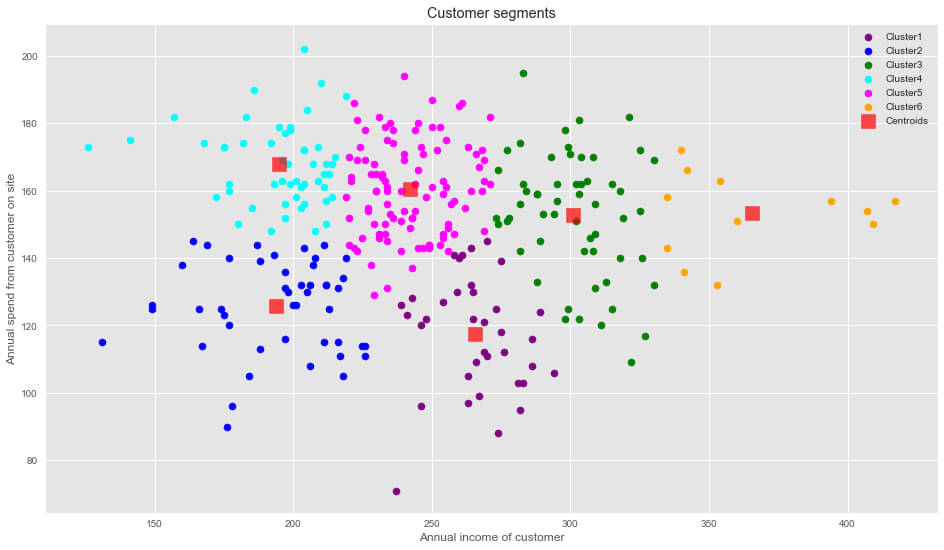
Your ideal audience segment is one that is both large and still growing, and you are able to reach with your marketing efforts. You’ll also want a segment that aligns with your business strategy – it makes no sense to focus your efforts on a segment of men in Australia if you are phasing out your menswear and don’t offer free shipping to Australia.
6. Develop a positioning strategy
Next, you need to develop a positioning strategy that will give you the best edge to compete in the selected target audience. Determine how to effectively position your product, taking into account other competitors – focus on how your positioning can win the largest amount of the market share.
There are several positioning strategy paths you can follow:
- Category-based positioning – This calls for determining how are your products or services better than the existing solutions on the market.
- Consumer-based positioning – This calls for aligning your product/service offering with the target audience’s behavioral parameters.
- Competitor-based positioning – This is a pretty straightforward approach that calls to prove you are better than competitor X.
- Benefit-based positioning – This calls for proving the benefits that customers will get from purchasing your product or service.
- Price-based positioning – This calls for distinguishing based on the value for the money people get when purchasing your product/service.
- Attribute-based positioning – Competitors, price, and benefits aside, this calls for zeroing in on a unique selling proposition that makes your product or service stands out from the rest.
- Prestige-based positioning – This calls for proving that your products supply a certain boost in status to those who purchase.
- Product Positioning Map – The product positioning map is a technique where the business uses visual display to show their products against competitors. This allows for an easy way of navigating and understanding which products are being represented in comparison with others, ultimately helping them make decisions about what should be prioritized or modified based on company needs.
Chose what positioning model makes the most sense based on your previous research, and which would allow you to reach your specific segment.
7. Choose your marketing mix
The last and final step in this long and winding process is to actually implement your strategy. For that, you will need to determine a marketing mix that will support your positioning and help you reach the target audience(s) that you’ve chosen.
A marketing mix consists of the so-called 4 Ps: Product, Price, Place, and Promotion. The 4Ps are one of the essential marketing models.
Lets breakdown what the 4Ps include:
- Product takes into consideration factors like variety, quality, design, branding, features, packaging, services, availability, and convenience.
- Price takes into consideration factors like pricing strategy, list price, penetration price, premium, discounting, payment methods, credit terms, and payment period. Are your target audience segments price sensitive?
- Place takes into consideration factors like channels, coverage, location, inventory, logistics, and trade channels.
- Promotion takes into consideration factors like digital marketing, public relations, social media, sponsorship, influencer marketing, content marketing, product placement, sales promotion and marketing communications. How will you communicate your value proposition to your target audience segments?
A carefully-curated marketing mix will ensure business success. However, if you do leave gaps in it, all the precious work you did at the previous stages might go to waste.
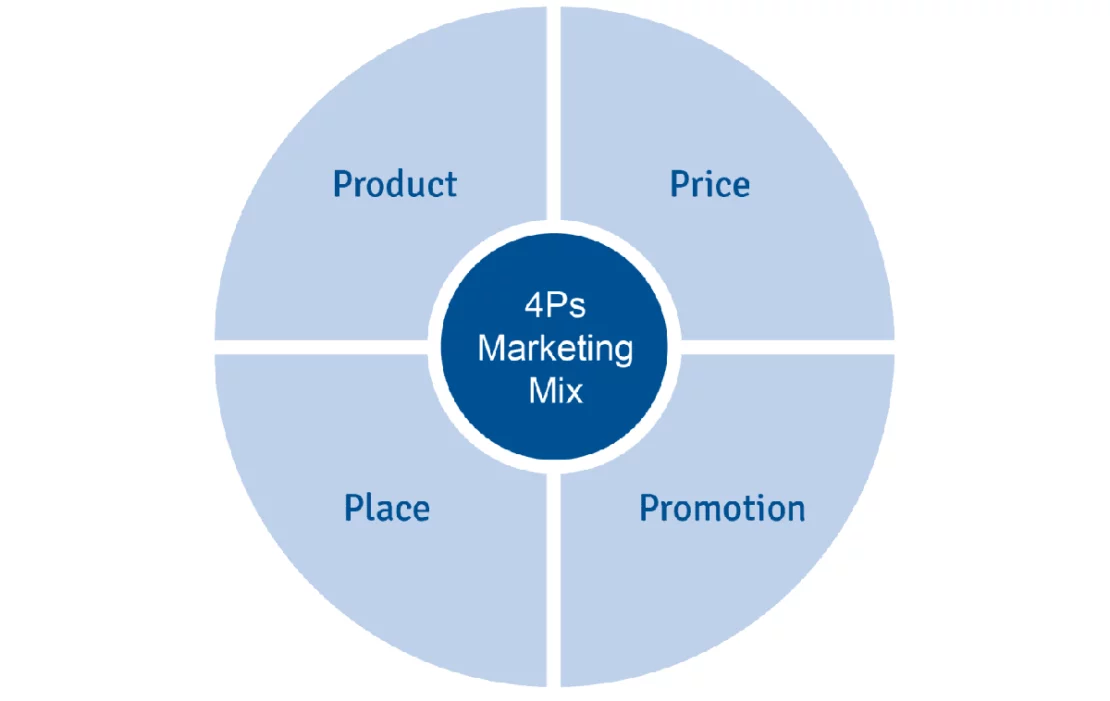
Here’s an example to illustrate a poor mix: Let’s say you want to sell a luxury skincare product to women in their 40s.
Your goal is to position it as a high-end addition to their skincare routine that targets concerns related to mature and aging skin. So you invest in print marketing and get your product featured in a couple of popular women’s magazines that skew towards the 30+ audience. You also make sure to price the product accordingly so it indicates the luxury category.
However, your packaging is cheap and poorly designed, while the product itself is sold in drugstores.
This inconsistency, which isn’t aligned with the overall positioning strategy, will prevent you from reaching your target audience in the first place; those who get reached will experience dissatisfaction resulting in negative word-of-mouth, which will eventually make your sales slumber.
Conclusion
Using the (segmentation targeting and positioning) STP model, businesses can identify their most valuable customer segments and create products and marketing communications that target those customers. This helps you create engaging, personalized marketing campaigns that convert visitors to customers at a high rate.
If you want to use clever segmentation and behavioral targeting methods in your eCommerce marketing strategy, get in touch with Yieldify and we’ll be happy to help!
STP marketing FAQ
STP marketing (Segmentation Targeting, and Positioning) is a three-step marketing framework. With the STP process, you segment your market, target your customers, and position your offering to each segment.
The most classic example of STP marketing is the Cola Wars of the 1980s. Both Pepsi and Coca-Cola used STP marketing to increase their market shares after the introduction of New Coke.
The three main steps within STP are: Segmenting your market (segmentation), identifying your target market (Targeting) and deciding on how you will position your brand (positioning)